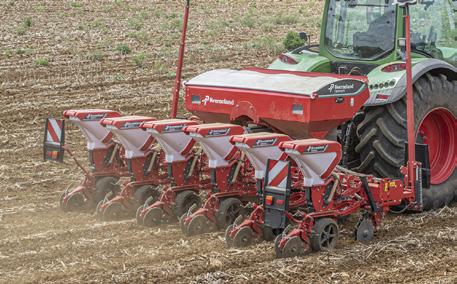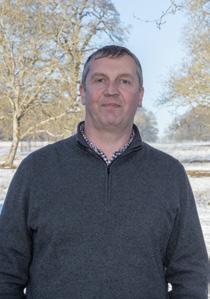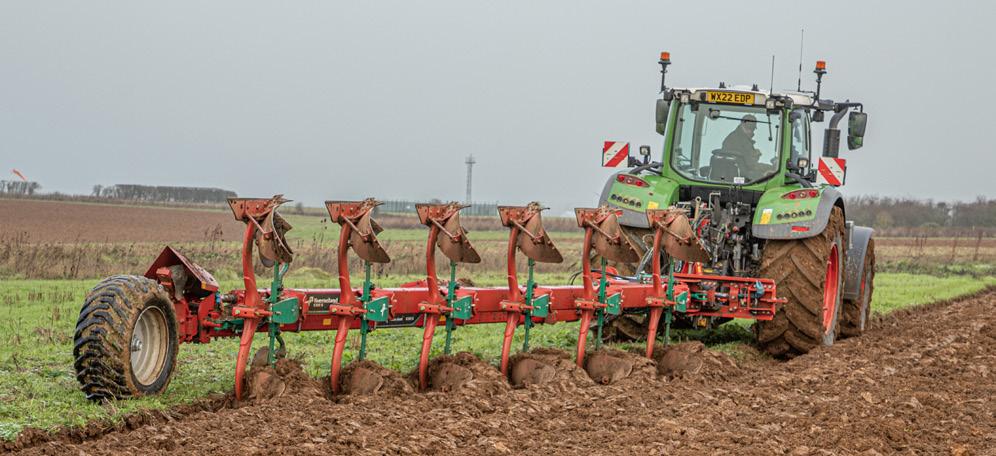
2 minute read
A quality finish
Seedbed quality and cultural control are among the key reasons why Barrington Park Estate continues to plough the lion’s share of its combinable crop acreage.
The organic 5,000-acre farm located in the Cotswolds, Gloucestershire, turns over almost 3,000 acres/year using a pair of six-furrow Kverneland semimounted ploughs, as it makes the most of clean and level seedbeds, to give its cereals the best possible start.


“As an organic farm, the plough will always be an integral part of our cultivations strategy,” explains foreman James Francis. “We have recently extended our rotation to seven years by including peas and beans, and with two-year red and white clover leys, our preference is to plough the grass in preparation for a first cereal.”
Barrington Park Estate has recently upgraded to a 6300S, replacing one of its two PB100 models through Chandlers Farm Equipment. Specification includes hydraulic front furrow and press arm, with bolt-on reversible points favoured over knock-on points.
Operators favour the single, central skimmer adjustment and the revised headstock design that enables tighter headland turns to be made.
“We’ve had Kv ploughs for over 20 years, and it’s well-built kit that does a great job,” he says.
“Though it helps when you have two very good ploughmen who also compete in matches. The finish they achieve is superb and when they follow each other in the same field, you can’t
Reflecting on yield taken from 180 acres of grain maize established using a six-row Kultistrip followed by a sixrow Optima V, Somerset grower Andy Longman believes the technique holds a lot of potential. “During this year’s exceptionally dry growing season, where crop stress was high, our yields were no different to those who established maize by ploughing and power harrowing,” explains Andy. “From a productivity viewpoint, the work we’re now covering in 30 minutes used to take 90 minutes for example, so we’re clocking up fewer hours and burning a lot less diesel. See issue 42. It’s encouraging to know that our processes have enabled us to trim establishment costs, without suffering a yield penalty,” he adds. “It’s a positive step forward.” differentiate the finish from either plough.”
James adds that on the thinly soiled Cotswold brash, the farm ploughs at 5-6in deep pulling furrow widths of 14 or 16in, depending on surface conditions and field location. Auto-reset is essential given the stony brash, and the switch to number 28 bodies suits 650 tyres in-furrow. Both ploughs are used with furrow presses during summer, but any winter ploughing is left open rather than pressed, which does provide a little extra output.
“Using Fendt 724’s, each plough covers 30-40 acres/day when pressing, helped with 1,800kg on the front linkage and up to 600kg in each rear wheel. It’s a very flexible solution for all field work,” he says. “Our soft Cotswold stone isn’t abrasive, so a set of points can last a season.”







